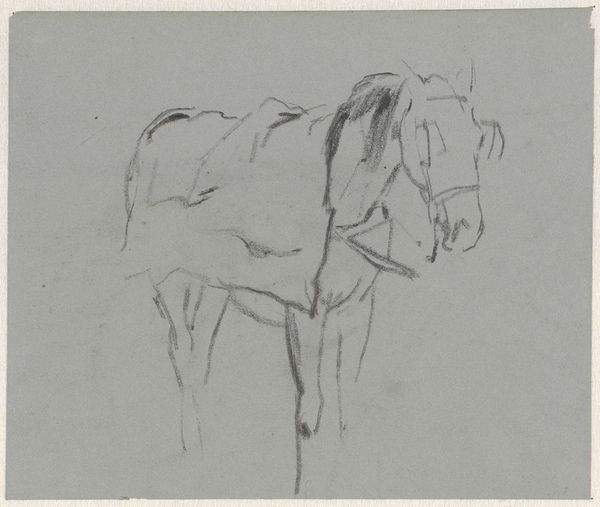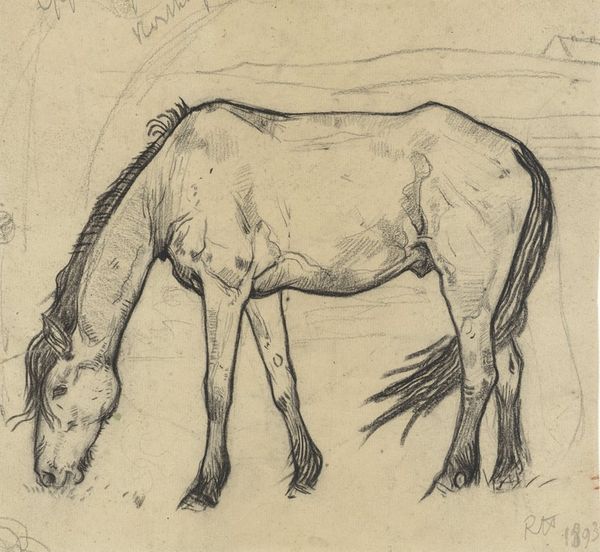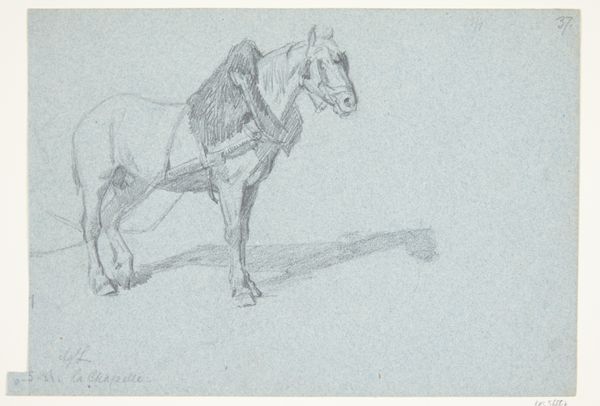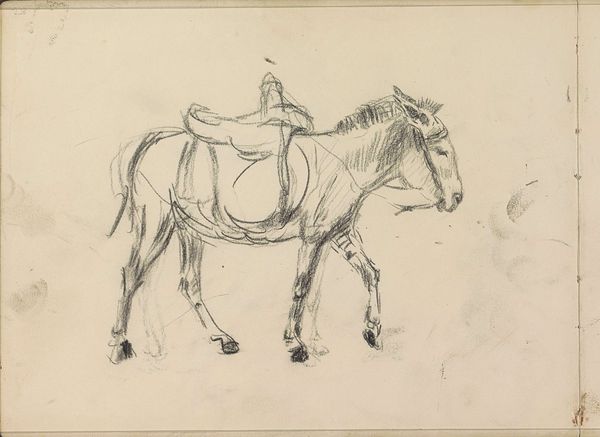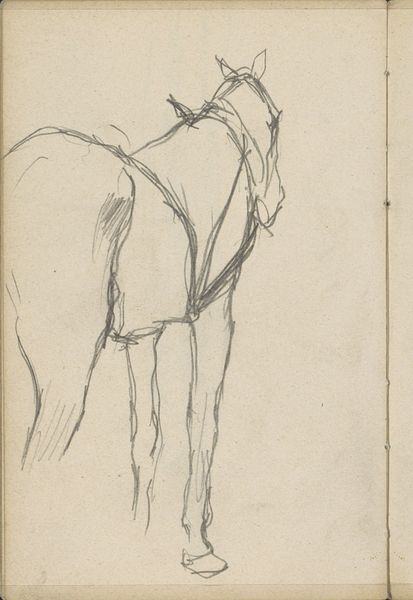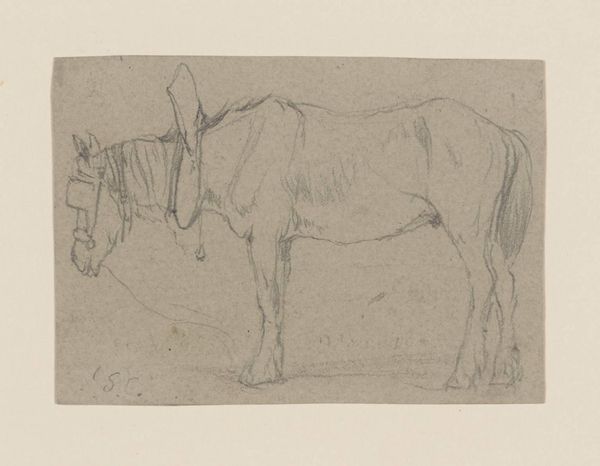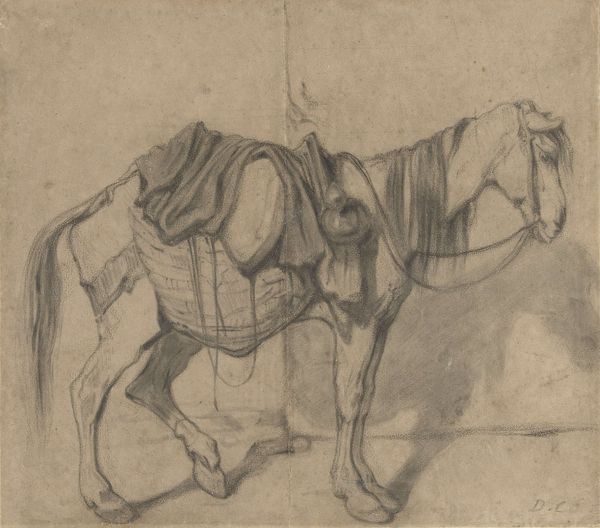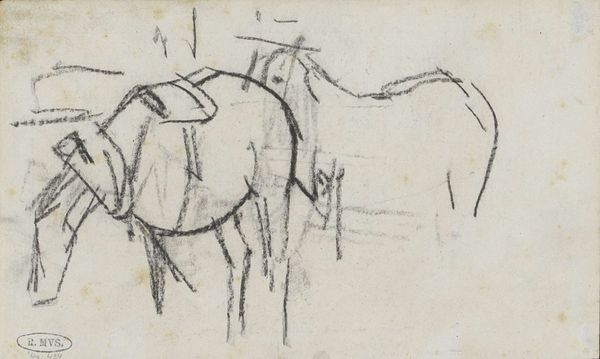
drawing, pencil, graphite
#
portrait
#
drawing
#
amateur sketch
#
light pencil work
#
quirky sketch
#
animal
#
incomplete sketchy
#
figuration
#
personal sketchbook
#
idea generation sketch
#
sketchwork
#
pencil
#
horse
#
graphite
#
sketchbook drawing
#
storyboard and sketchbook work
#
sketchbook art
#
realism
Dimensions: height 167 mm, width 190 mm
Copyright: Rijks Museum: Open Domain
This drawing of a harnessed horse was made by Adolf le Comte using graphite on paper. The quick, sketch-like quality of the drawing gives us insight into the artist's process, and it’s clear that the horse’s burden is the central theme. The lines are sparse, but they capture the weight and tension of the harnessed animal, ready to pull. The choice of graphite, a humble material, further emphasizes the work's focus on labor. Unlike a painting which might glorify the horse or its rider, here the animal’s musculature and the harness are given equal attention. We see the horse not as a symbol of power or status, but as a working animal, its form shaped by its function. Le Comte's drawing invites us to consider the social context of animal labor, and the ways in which our understanding of value is bound up with the laboring body. By focusing on materials, making, and context, we can appreciate the full meaning of this drawing, challenging traditional distinctions between fine art and craft, whilst considering the wider political and social implications.
Comments
No comments
Be the first to comment and join the conversation on the ultimate creative platform.
